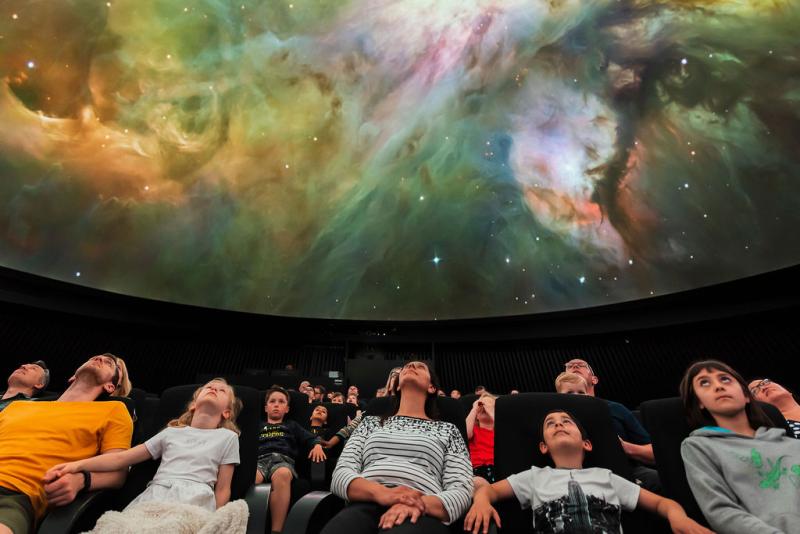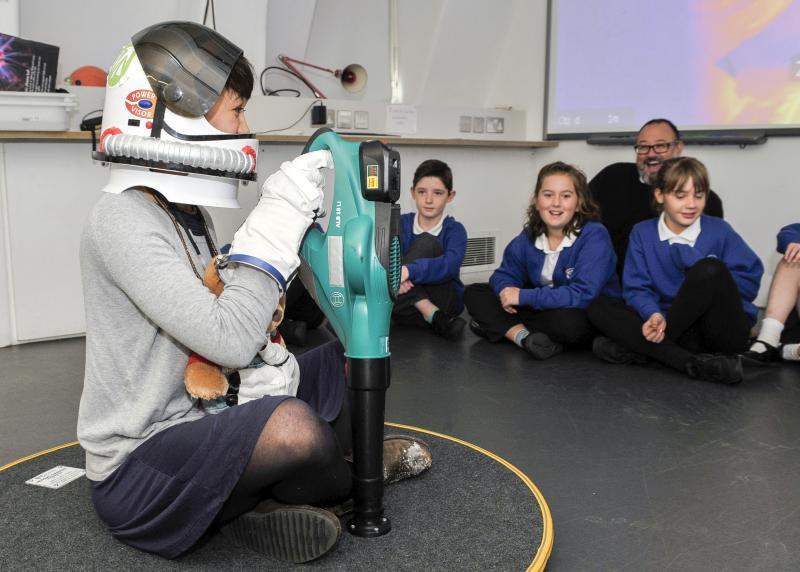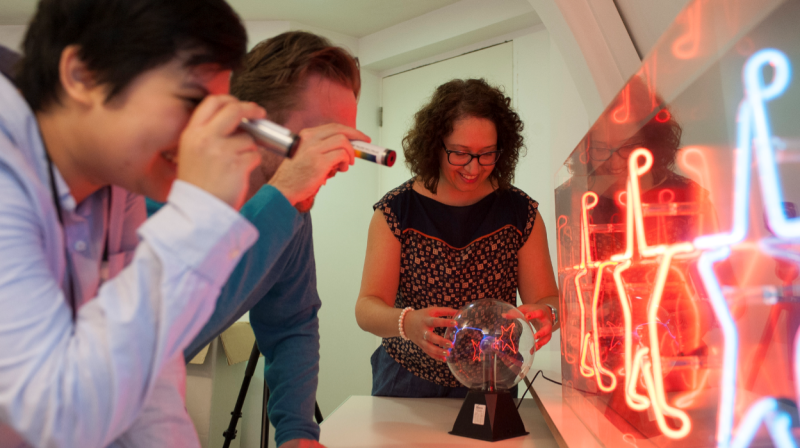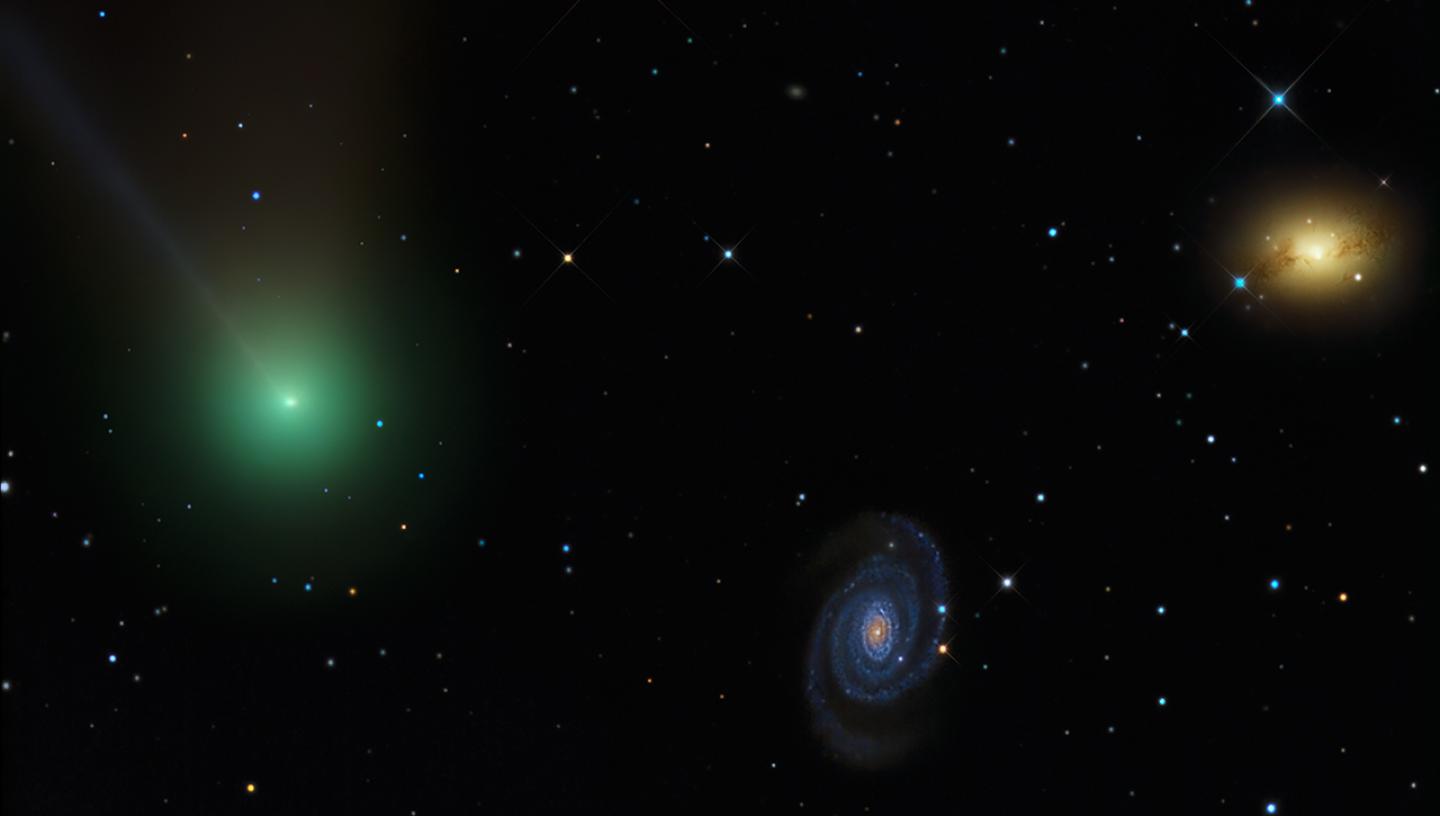
Discover what to see in the night sky in February 2022, including the planet Venus returning as the 'Morning Star' and the Winter Hexagon
Top 3 things to see in the night sky in February
- Throughout the month - Explore the Winter Hexagon
- Throughout the month - Spy on the spiral galaxy M81
- 16 February - Spot a trio of planets before sunrise
(Details given are for London and may vary for other parts of the UK)
Look Up! podcast
Subscribe and listen to the Royal Observatory Greenwich's podcast Look Up! As well as taking you through what to see in the night sky each month, Royal Observatory Greenwich astronomers pick a topic to talk about.
Our astronomers have taken a short break for February, but will be back in March!
Our podcast is available on iTunes and SoundCloud
Astronomy in February 2022: key events and what to see
Throughout the month: Explore the Winter Hexagon
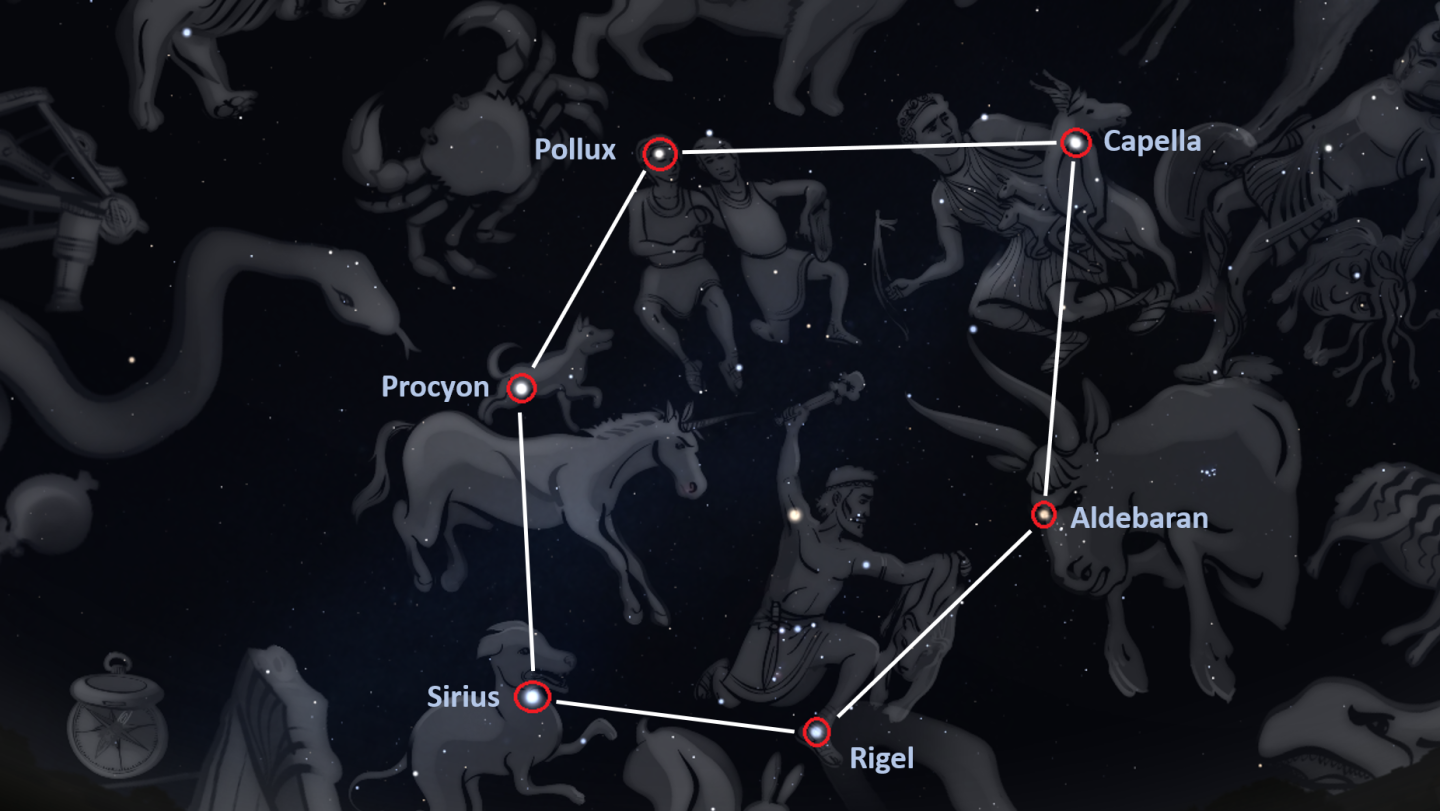
The Winter Hexagon is a giant asterism containing six of the brightest stars in the night sky - Rigel, Aldebaran, Capella, Procyon, Sirius, and Pollux. The Winter Hexagon is easy to spot – begin your journey at the bright white/blue star Rigel in the constellation of Orion the Hunter and make your way anticlockwise around the sky, hopping from star to star.
A number of deep sky objects can be found inside the Winter Hexagon including nebulae, such as the Orion and Rosette Nebulae, and star clusters such as the interestingly named Salt and Pepper cluster as well as M38, the Starfish cluster. Another asterism lies inside the Winter Hexagon – join the stars Betelgeuse, Procyon and Sirius and you’ll form the Winter Triangle.
Throughout the month: Spy on a spiral galaxy
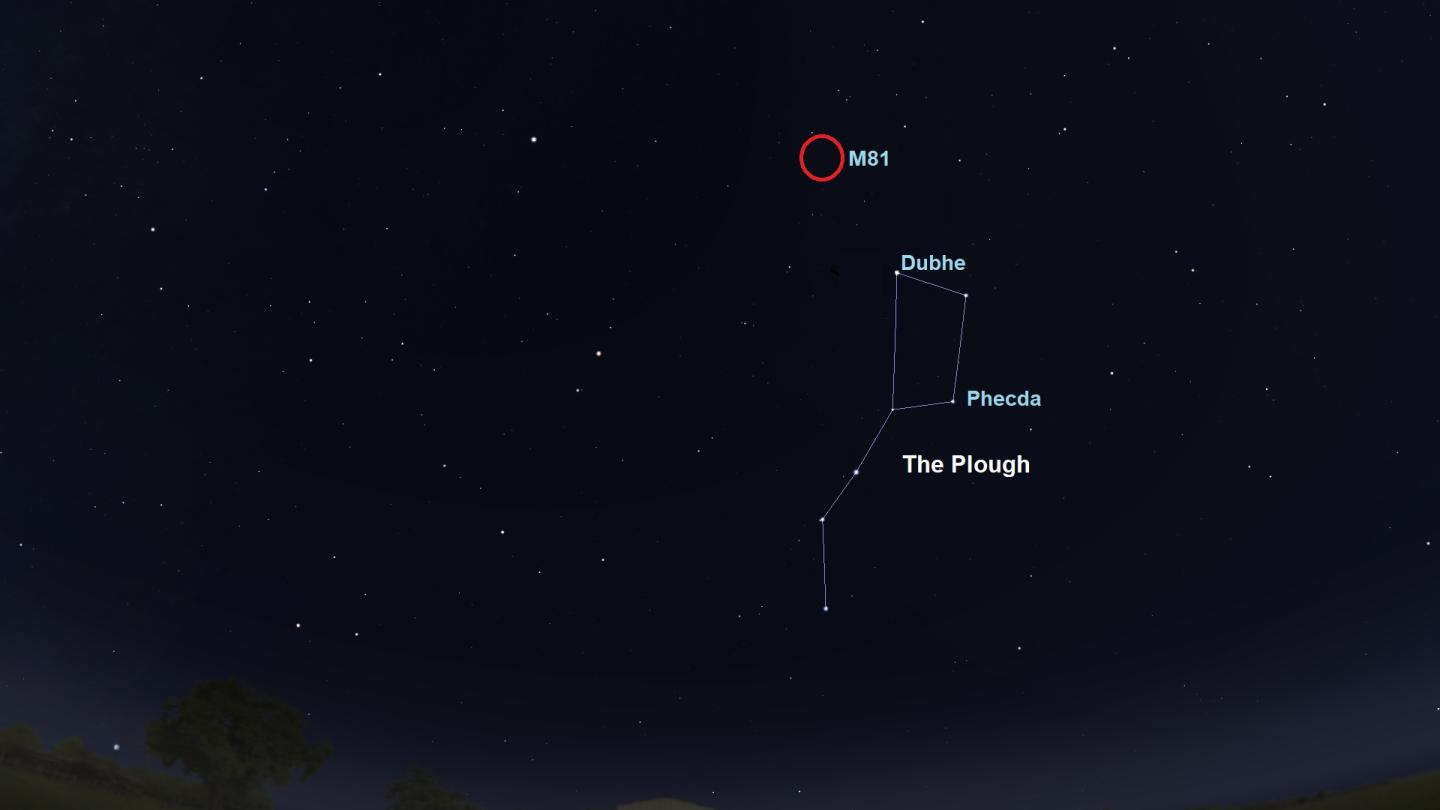
Bode's Galaxy, or M81, is a stunning spiral galaxy with well-defined spiral arms which is why M81 is often referred to as a grand design spiral galaxy. The galaxy lies at a distance of around 12 million light-years from the Earth and has an estimated diameter of 90,000 light-years (just slightly smaller than our own Milky Way galaxy). At the core of the galaxy lies a black hole with a mass about 70 million times the mass of our Sun.
Bode's Galaxy is best viewed through a pair of binoculars or a telescope - under dark sky conditions, a telescope will reveal the spiral structure of the galaxy. To find the galaxy, begin by locating the Plough in the sky. Draw a line to connect the star Phecda to Dubhe, and then extend this line beyond Dubhe by about the same amount that separates Phecda and Dubhe. Sweep the skies towards the bottom left of where your line ends and you should spot M81.
16 February: A trio of planets
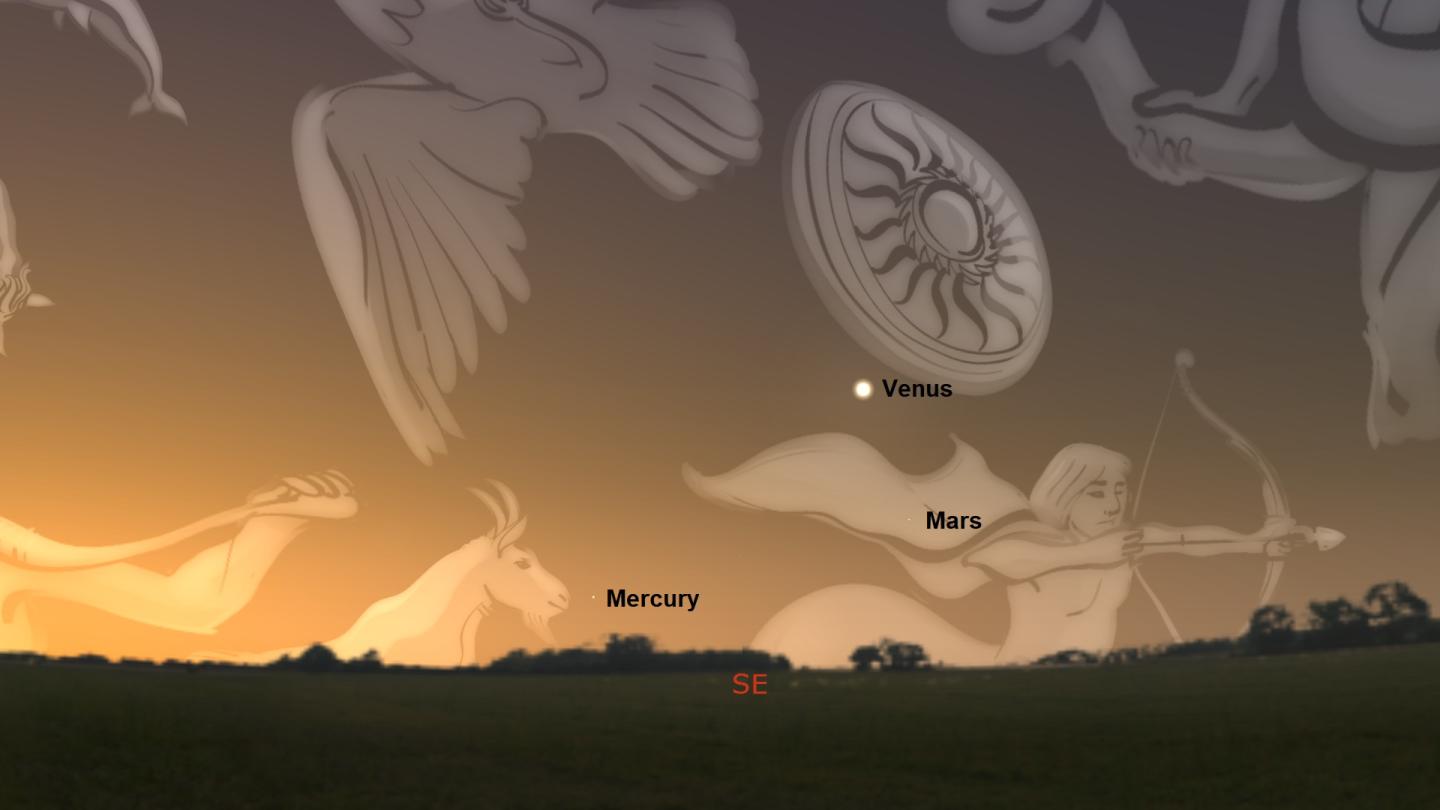
Mercury reaches its greatest western elongation which means that the angle between the Sun and Mercury is at its greatest making this the best time to view the planet. As Mercury will be lying quite low above the horizon, you will need an unobstructed view towards the south-east to spot the planet. Look in that direction at around 6:30am and you'll see Mercury joined by two additional planets: Mars and Venus.
Venus will be shining brightly and will be easy to spot. If you have a pair of binoculars or a telescope, have a look at Venus and you'll see the planet in a crescent phase. Venus is known as the "Morning Star" when it's up in the sky before sunrise, and as the "Evening Star" when it is visible in the sky after sunset. Venus is heading to its greatest western elongation which it will reach on 20 March.
16 February: The Snow Moon Full Moon
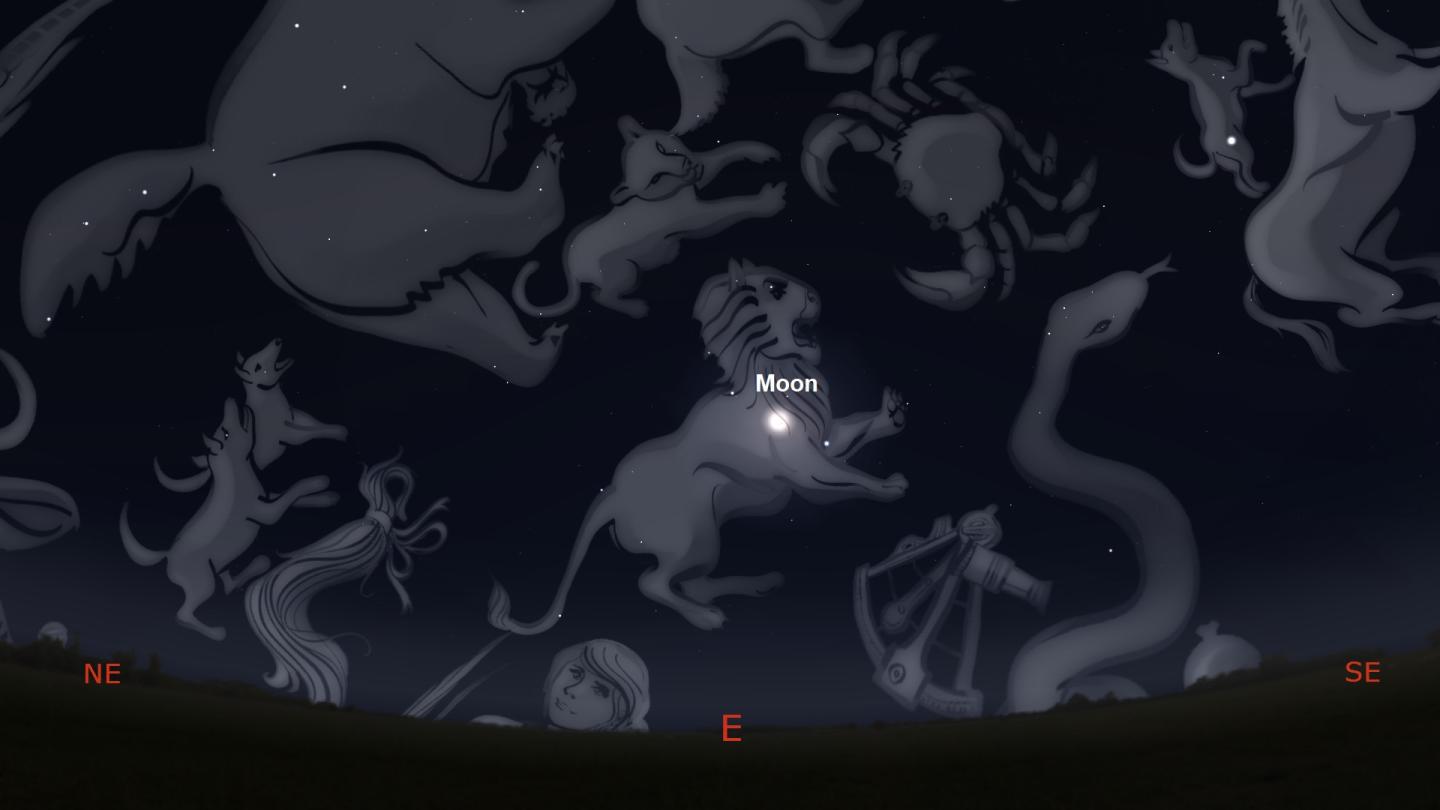
Different cultures around the world have given names to the full moon of each month. Most of the names used today come from Native American culture. This month’s full moon, which falls on 16 February is known as the Snow Moon, because the month of February coincides with cold and snowy weather in North America. Shining brightly below the full moon is the blue/white star Regulus.
To the unaided eye, Regulus appears to be a single star but it is a member of a quadruple star system. Through a good pair of binoculars, you might be able to see two points of light. The brighter of the two is Regulus A, whose stellar companion is thought to be a white dwarf star. The other two companions, themselves gravitationally bound, is the fainter of the two points of light.
Southern Hemisphere: A planetary nebula in Vela
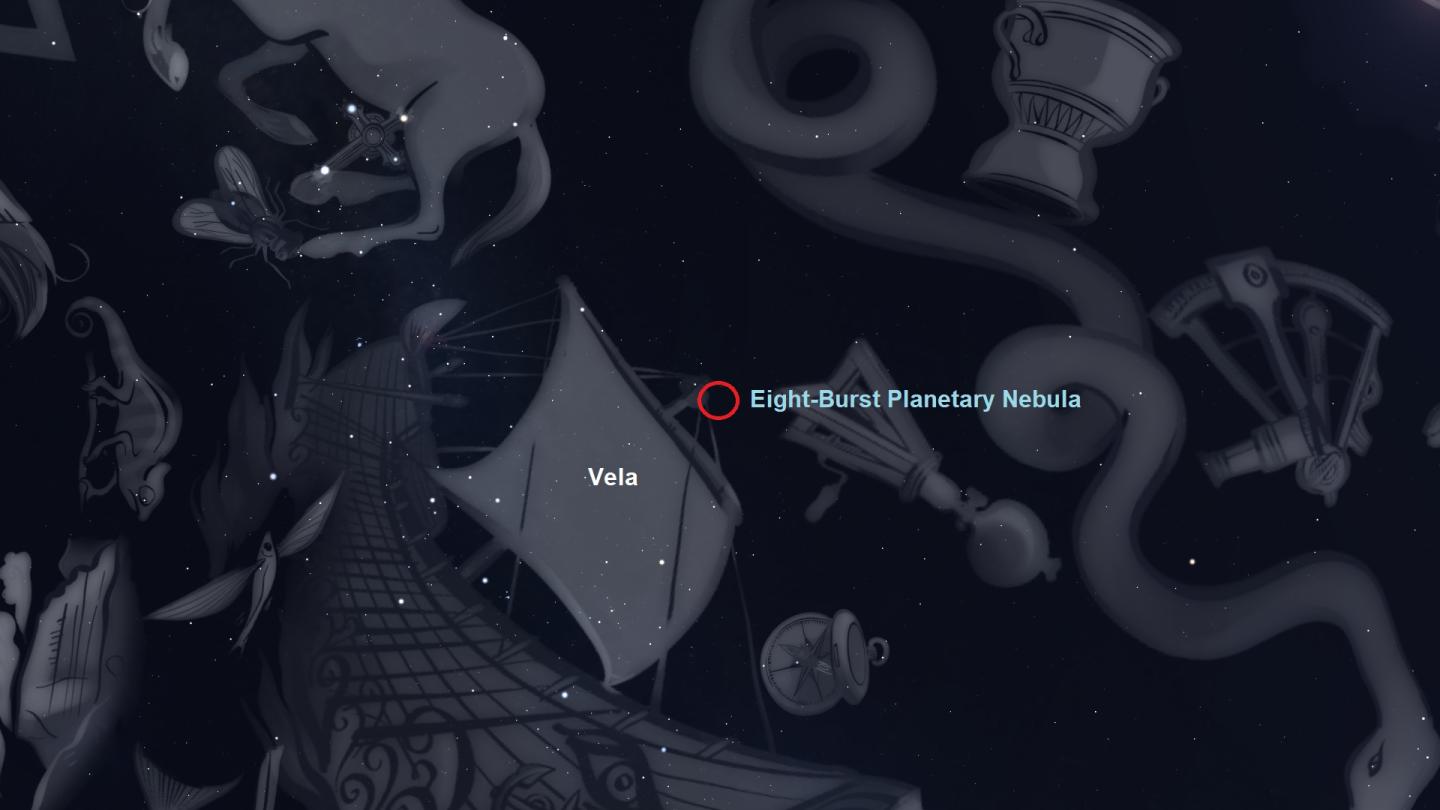
The constellation of Vela the Sails was originally part of the much larger constellation of Argo Navis the Ship. NGC 3132 is a planetary nebula that lies within the Vela constellation. Also known as the Eight-Burst Nebula because the loops of gas in the nebula interlock in a figure-of-eight shape, this nebula has an oval shape and a central star that are easy to spot in a small telescope. The nebula is almost half a light year in diameter and is one of the closest planetary nebulae lying about 2,000 light years away from us. A planetary nebula is produced when a Sun-like star nears the end of its life - our own Sun will produce a planetary nebula when it reaches the end of its life in about 5 billion years' time.
The Moon's phases this month
- 1 February: new moon (5:46am)
- 8 February: first quarter (1:50pm)
- 16 February: full moon (4:57pm)
- 23 February: last quarter (10:33pm)
'Beyond the limb © Nicolas Lefaudeux' is one of the winning images from the 2021 Astronomy Photographer of the Year competition. See the other winning and shortlisted images of the competition in a new exhibition at the National Maritime Museum.
Stargazing Tips
- When looking at faint objects such as stars, nebulae, the Milky Way and other galaxies it is important to allow your eyes to adapt to the dark – so that you can achieve better night vision.
- Allow 15 minutes for your eyes to become sensitive in the dark and remember not to look at your mobile phone or any other bright device when stargazing.
- If you're using a star app on your phone, switch on the red night vision mode.
Need a stargazing telescope or binoculars? Check out our range of high quality observing equipment recommended by Royal Observatory Greenwich astronomers.
See our range of observing equipment
Share your pictures
This month's banner image is 'The Canopy Wanderers' taken by Lefteris Velissaratos and it is one of the shortlisted images from the 2021 Astronomy Photographer of the Year competition.
Do you have any images of the night sky? If so, why not share your photos via our Royal Observatory Astrophotography Facebook group.
You can also connect with us via Twitter: @ROGAstronomers
Planetarium Shows
Join us for live planetarium shows
Royal Observatory Greenwich YouTube Channel
Subscribe to our YouTube channel and join us on a journey through time and space as we explore our Universe. You'll find a selection of videos on our channel, including our Observatory Online video series in which our astronomers explore different topics in Astronomy and Space Exploration.
Resources for teachers and students
The Royal Observatory Greenwich's learning team has also created:
- Free animated videos that answer the biggest questions in astronomy and free resources to go alongside them.
- A whole host of podcasts featuring interviews with real space scientists, astronauts and active researchers working in UK universities.
- A 'learning at home' hub which contains a suite of resources for you to use at home.


